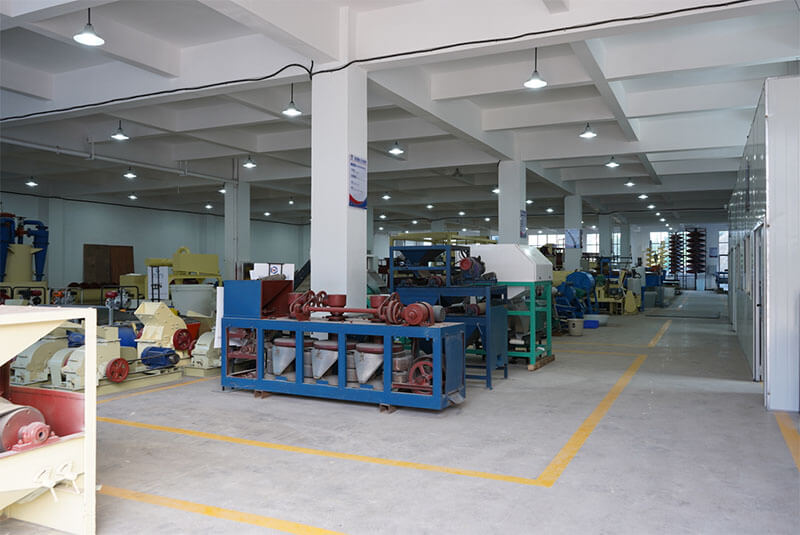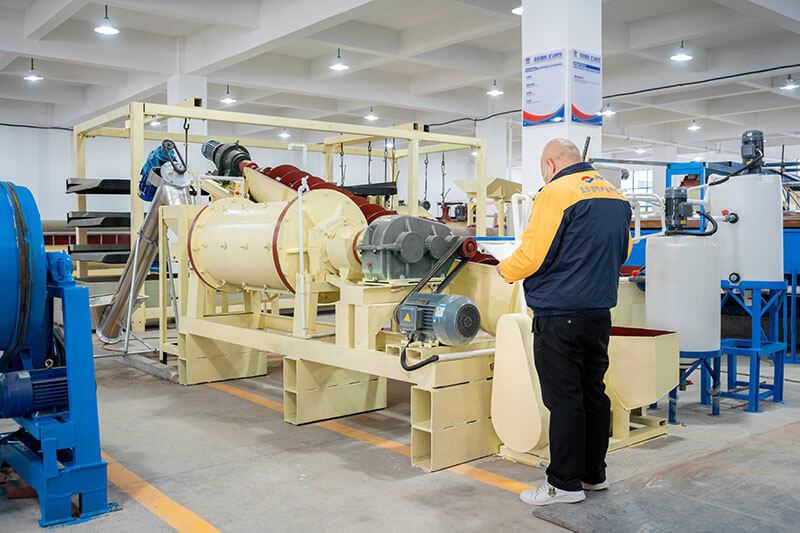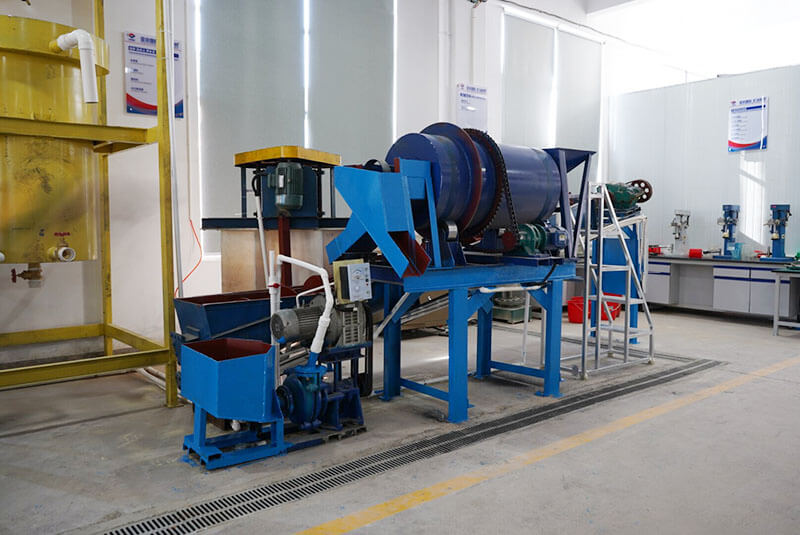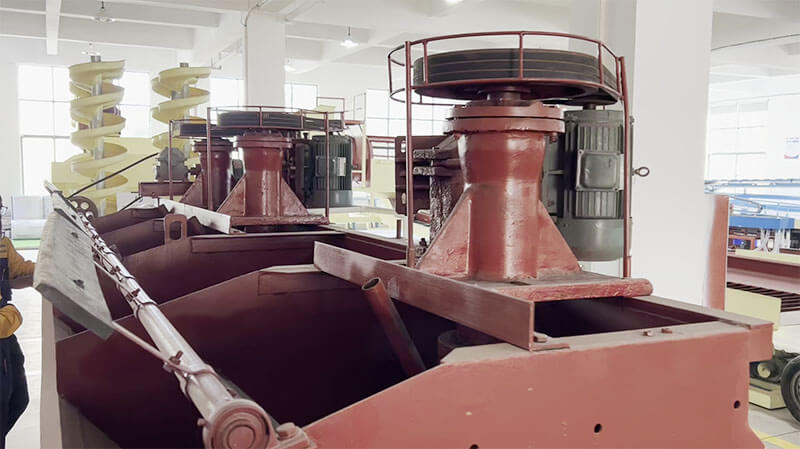Lithium is the lightest metal element in nature and exists in rock spodumene. Lithium products have wide applications in high-energy batteries, aerospace, nuclear fusion power generation, and other fields. Therefore, lithium is known as the “new energy metal of the 21st century”, and lithium is also known as an “important element driving the world forward”. Lithium resources mainly exist in granite pegmatite deposits and salt lake brine deposits. So far, the beneficiation methods for selecting spodumene include manual selection, magnetic separation, flotation, and combined beneficiation. Among them, the flotation method of spodumene is the most extensively studied in the laboratory and the most widely used mineral processing method in industry.
Lithium Ore Beneficiation Steps
- Raw ore crushing: rough crushing, medium crushing, and fine spodumene ore crushing to achieve particle size suitable for mineral processing.
- Ore pretreatment: The spodumene ore pretreatment mainly includes leaching and flotation to remove impurities and improve the lithium grade.
- Ore grading: Classify the preprocessed spodumene ore according to particle size for subsequent processing.
- Lithium ore flotation: The purpose of the lithium ore flotation process is to separate lithium ore from impurities and obtain lithium concentrate.
- Treatment of spodumene concentrates. Further treatment of spodumene concentrates, mainly including grinding and flotation steps, to improve the grade and recovery rate of spodumene.
Lithium Ore Beneficiation Test
The process is as follows: jaw crusher → roller → ball mill → flotation
Main equipment: jaw crusher, roller, cone ball mill, flotation machine
Jaw crusher – primary crushing
Purpose – crush the raw spodumene into smaller stones:
Lab jaw crusher introduction
The laboratory jaw crusher is widely used for crushing fine, medium, and fine materials. It is environmental protection equipment for laboratories in coal power, power, mining, geology, metallurgy, building materials, and chemical industry.
- This machine is a stone crushing machine. It can open the moving and static jaws easily, which is convenient for cleaning and ensures no mixing. It can coarsely and medium crush various ores and materials with a compressive strength of less than 24kg/cm2.
- It has a large crushing ratio, uniform particle size, adjustable discharging particle size, uniform product particle size composition, and convenient adjustment. This machine meets the requirements of testing, mineral processing, etc.
- It uses one-stage crushing to replace the currently used multi-stage crushing. This lab crusher is suitable for crushing materials with high hardness. Place the lab jaw crusher on horizontal ground, and it will work.
Next, let’s start the lithium ore beneficiation test
- Put this spodumene raw ore into the feed port of the jaw crusher, and after starting, the two tooth plates squeeze each other to crush the material to 20-30mm.
- Finally, the finished product after crushing is displayed.
A brief introduction: The function of the jaw crusher is to break the big material into smaller pieces.
Roll crusher – second crushing
Purpose: To perform a second crushing of the material.
Lab roller crusher introduction
- The laboratory roller crusher is suitable for crushing coal and various ores and rocks with moderate hardness (compressive strength not exceeding 700kg/m2) in industries such as coal, electricity, chemical, metallurgy, geology, and scientific research institutes.
- This machine has the advantages of a simple structure, flexible adjustment of discharge particle size, and stable performance. It does not have a dust prevention device to prevent dust from rising outside during equipment operation, polluting the environment and affecting the health of operators.
Experimental process
Pour 20-30mm of material into the feeding port of the lab roller crusher. The rollers will rotate and squeeze the material to a specific particle size range, such as 0-10mm and 0-5mm. The discharged material is fine, with a lot of powder-like particles.
Finally, the lab roller crusher is usually used for the second or third crushing of various ores, such as rock gold, lithium ore, chromium ore, copper lead-zinc ore, etc.
Ball mill – grinding
Purpose: Fine grinding of materials
Ball mill introduction
The cylindrical ball mill, a laboratory grinding equipment, is a fully enclosed dry and wet dual-use intermittent grinding equipment. It has wide applications in ore selectivity studies in semi-industrial laboratories such as building materials (especially cement and ceramic industries), refractory materials, metallurgy, coal, light industry, and chemical industry. This machine is a transitional grinding equipment for continuous and intermittent grinding. It is also suitable grinding equipment for artificial heavy sand separation of minerals in geological experimental work.
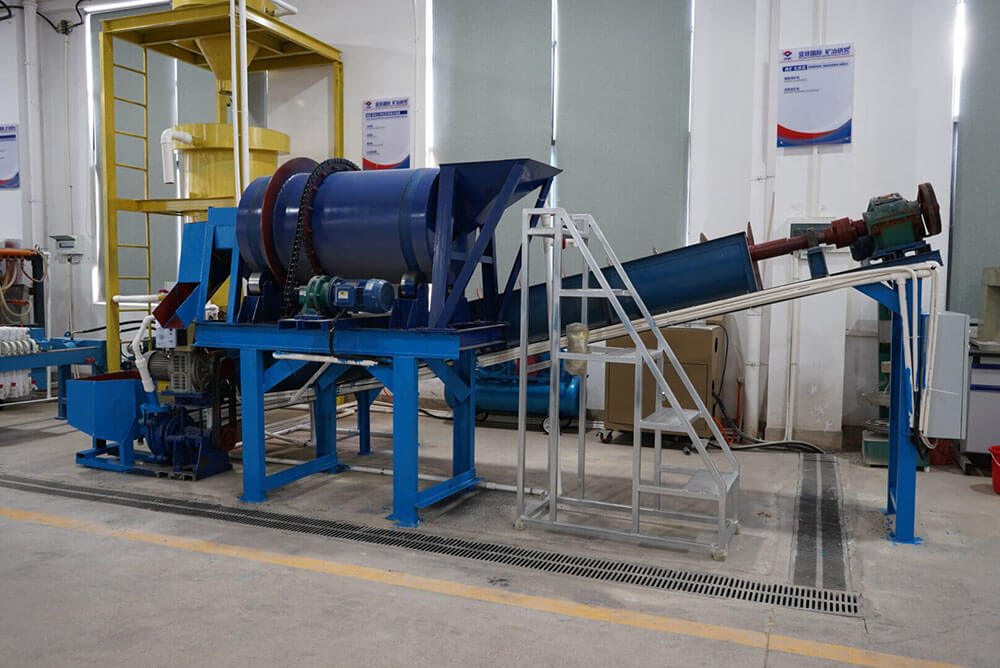
Experimental process
In spodumene beneficiation, ball mills are used to grind materials, making the final product reach 0-80 mesh or finer.
Next, let’s start the experiment:
After crushing, pour the material into a ball mill and ground it with steel balls. At this point, you can see that the ball mill will rotate continuously, and the grinding steel balls inside will grind the material into fine particles.
Other minerals such as copper, gold, chromium, and other metal ores also use ball mills.
-
Laboratory flotation machine
Purpose: Lithium ore beneficiation
Lab flotation machine introduction
- Flotation is a commonly used beneficiation process in mines, which can separate and enrich non-ferrous, ferrous, and non-metallic minerals.
- Due to the differences in the properties of the raw ore in each mining area, the flotation process for various ores is inevitably not the same. Before formulating the flotation process, it is essential to conduct beneficiation experiments to determine the reasonable values of different indicators and parameters in the flotation process.
- The small flotation machine used in the laboratory is the major equipment in flotation experiments. Due to its simple structure, easy operation, and easy maintenance, this equipment has wide applications in geological, metallurgical, chemical, and mineral processing laboratories.
Experimental process
First, let me introduce the function of the laboratory flotation machine: it is a mineral processing equipment that requires the addition of conventional reagents. The chemicals for different materials are also different.
Next, let’s start the experiment:
- Pour the finely ground slurry into the tank and dilute it with water to the desired concentration. Start the motor and add an appropriate volume of flotation reagent according to the experimental requirements.
- When it generates foam in the tank, turn on the switch of the scraper part to start flotation. After reaching the specified flotation time, turn off the motor to stop the impeller and scraper from running.
Finally, summarize the applicable minerals of laboratory flotation machines: gold, copper, lead and zinc, fluorite, lithium ore, etc.
JXSC lab mineral processing equipment manufacturer has more than 38 years of experience in mining processing. We provide various lab mining equipment including gravity-separating equipment for processing minerals such as gold, tin, tungsten, lead, zinc, tantalum, niobium, iron, manganese, silver, titanium-iron, etc. Lab machines include laboratory jaw crusher, hammer crusher, roller crusher, grinding equipment, lab gravity separator, screening, washing equipment, etc. Welcome to consult!

